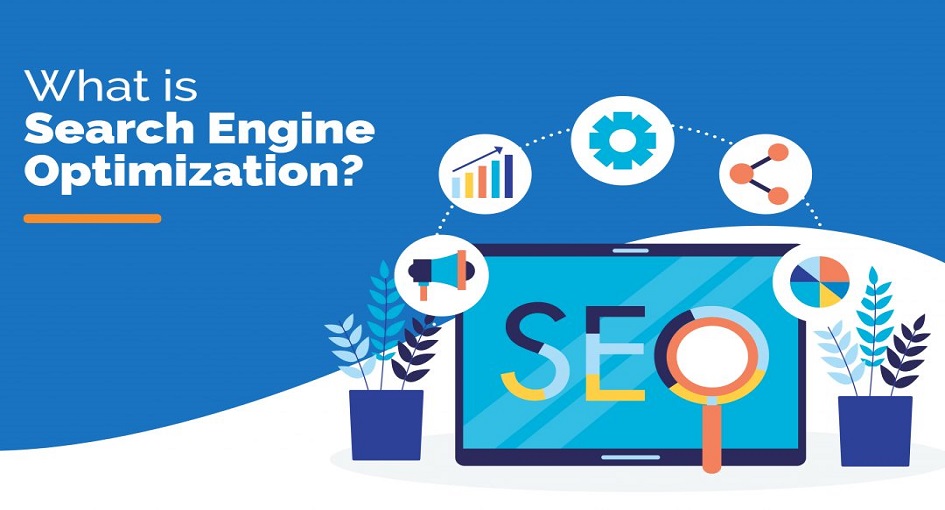
Search engine optimization (SEO) is the process of improving a website’s visibility and ranking in search engine results pages (SERPs) for specific keywords or phrases. The goal of SEO is to drive organic traffic to a website and increase its visibility and credibility in the eyes of search engines and users. In this ultimate guide to SEO, we’ll discuss various strategies and techniques to help you improve your website’s SEO and drive more traffic to your website.
Keyword Research:
Keyword research is the foundation of any successful Search engine optimization campaign. Before you start optimizing your website, you need to identify the keywords and phrases that your target audience is using to search for products or services related to your business. There are many keyword research tools available that can help you find the right keywords for your website. Some of the most popular keyword research tools include Google Keyword Planner, SEMrush, Ahrefs, and Moz Keyword Explorer.
On-Page Optimization:
On-page optimization refers to the various techniques used to optimize the content and structure of a web page to improve its visibility and ranking in SERPs. This includes optimizing the title tag, meta description, header tags, and URL structure of your web pages. It also involves using relevant keywords throughout your content and optimizing your images and videos for search engines.
Off-Page Optimization:
Off-page optimization involves all the activities that take place outside of your website to improve its visibility and ranking in SERPs. This includes building high-quality backlinks to your website, social media marketing, and online reputation management. Building high-quality backlinks from authoritative websites is one of the most important off-page SEO strategies.
Technical SEO:
Technical SEO refers to the various technical aspects of a website that can affect its visibility and ranking in SERPs. This includes optimizing the website’s structure and coding, making sure it’s mobile-friendly, and improving its page load speed. Technical SEO is critical for website performance and user experience.
Local SEO:
Local SEO is a subset of SEO that focuses on improving the visibility of a website for local search queries. This includes optimizing the website for location-specific keywords, creating local business listings, and optimizing Google My Business profiles. Local SEO is critical for businesses that have a physical presence and want to attract local customers.
Content Marketing:
Content marketing involves creating and publishing high-quality content that’s optimized for search engines and designed to attract and engage your target audience. This includes blog posts, articles, infographics, videos, and other types of content that your audience finds valuable and relevant. Content marketing is a critical component of SEO, as it helps attract and retain website visitors.
Analytics and Reporting:
Analytics and reporting involve monitoring and analyzing website traffic and user behavior to measure the effectiveness of your SEO efforts. This includes tracking website traffic, conversion rates, bounce rates, and other key metrics to understand how your website is performing. Analytics and reporting are critical for identifying areas of improvement and optimizing your website for better results.
In addition to the strategies and techniques mentioned above, there are a few other things to keep in mind when it comes to SEO. First, it’s important to stay up-to-date with the latest trends and best practices in the industry. Search engine algorithms are constantly changing, and what worked well in the past may not be as effective today.
Second, it’s important to focus on user experience when optimizing your website for search engines. This means creating a website that’s easy to navigate, loads quickly and provides valuable and relevant content to your audience. A website that’s optimized for users will also be optimized for search engines.
Third, it’s important to be patient when it comes to SEO. It can take time to see results from your efforts, and there are no guarantees of success. However, with persistence and a focus on creating high-quality content and building high-quality backlinks, you can improve your website’s visibility and drive more traffic over time.


Another important aspect of Search engine optimization is to ensure that your website is optimized for mobile devices. With more people accessing the internet through their smartphones and tablets, search engines give preference to websites that are mobile-friendly. This means that your website should be responsive, with a design that adapts to different screen sizes, and loads quickly on mobile devices.
In addition to creating high-quality content, it’s also important to promote your content through social media and other channels. By sharing your content on social media platforms like Facebook, Twitter, and LinkedIn, you can reach a wider audience and increase your website’s visibility.
It’s also important to be aware of the different types of search queries and optimize your website accordingly. For example, voice search is becoming increasingly popular, and people are using longer, more conversational queries when using voice assistants like Siri and Alexa. By optimizing your content for long-tail keywords and natural language, you can improve your chances of appearing in voice search results.
Another important factor to consider is local search optimization. If you have a physical business location, it’s important to create local business listings on platforms like Google My Business, Yelp, and other local directories. This can help improve your visibility for local search queries and drive more traffic to your website.
Finally, it’s important to stay up-to-date with the latest SEO tools and technologies. There are many tools available that can help you analyze your website’s performance, identify areas of improvement, and track your progress over time. By staying informed and using the latest tools and technologies, you can stay ahead of the competition and achieve long-term success with SEO.
In conclusion, Search engine optimization is an ongoing process that requires continuous monitoring and optimization. By following the strategies and techniques outlined in this guide, you can improve your website’s visibility, drive more organic traffic, and improve your online presence. Remember to focus on creating high-quality content, building high-quality backlinks, and optimizing your website for search engines and users. With patience and persistence, you can achieve long-term success with SEO.